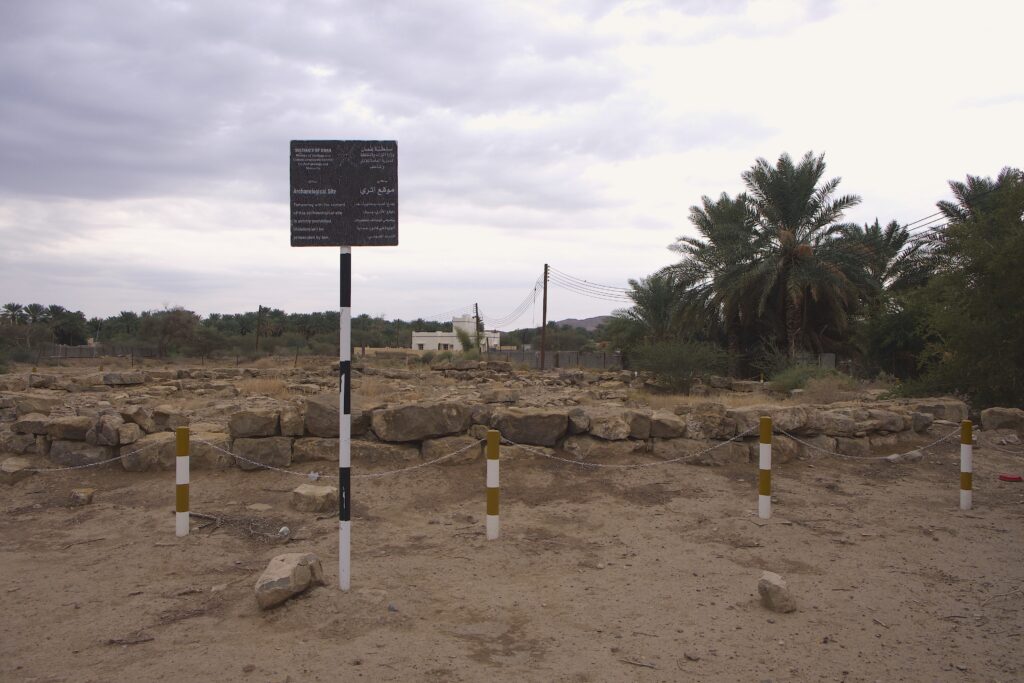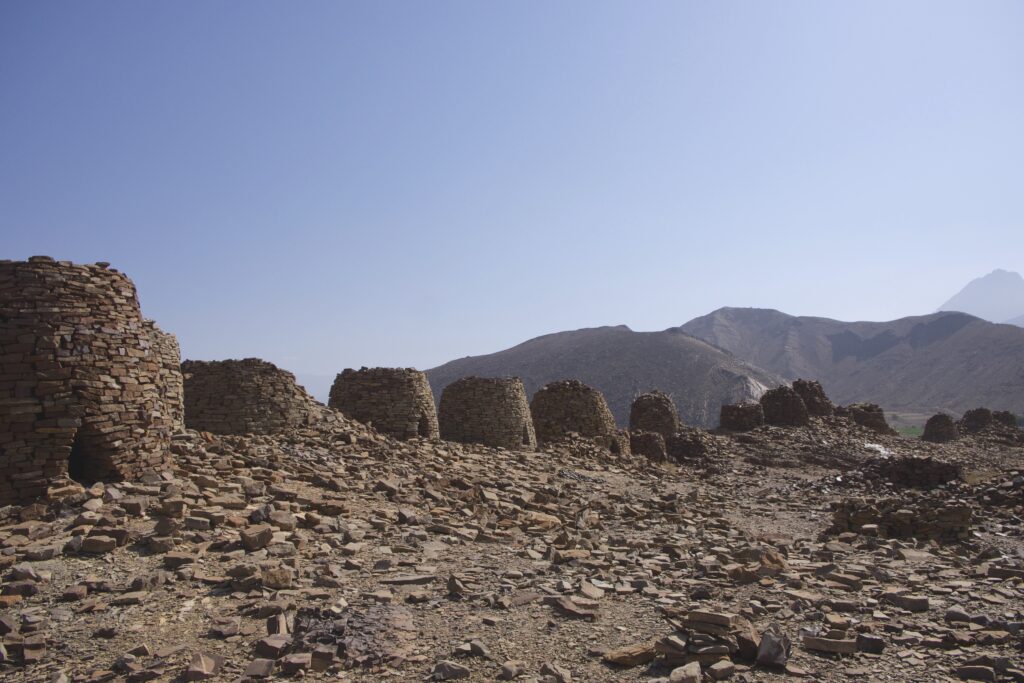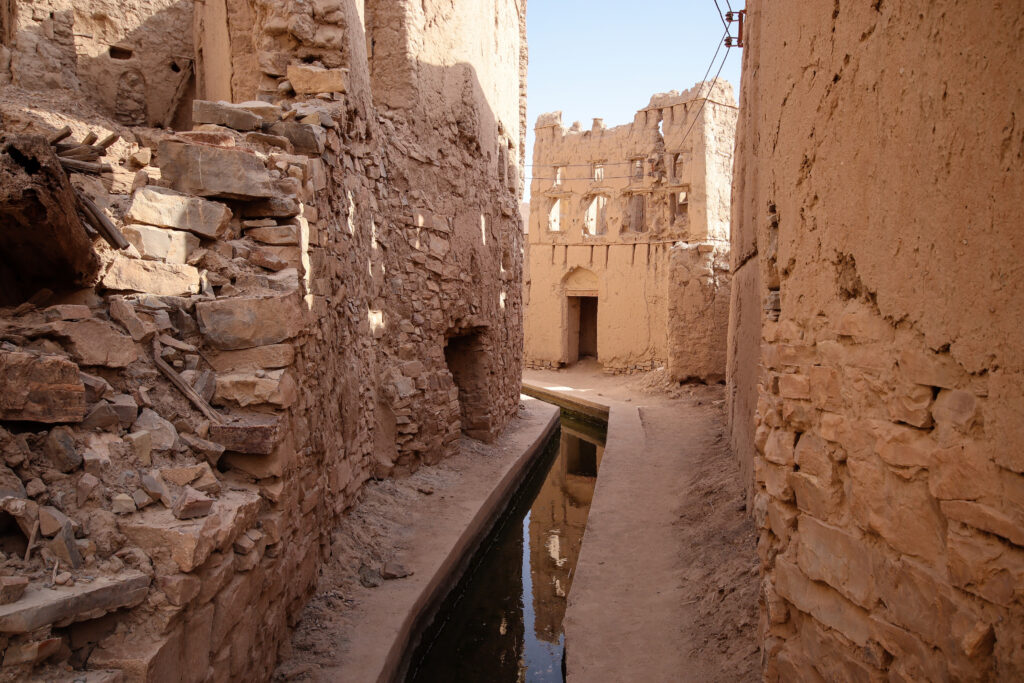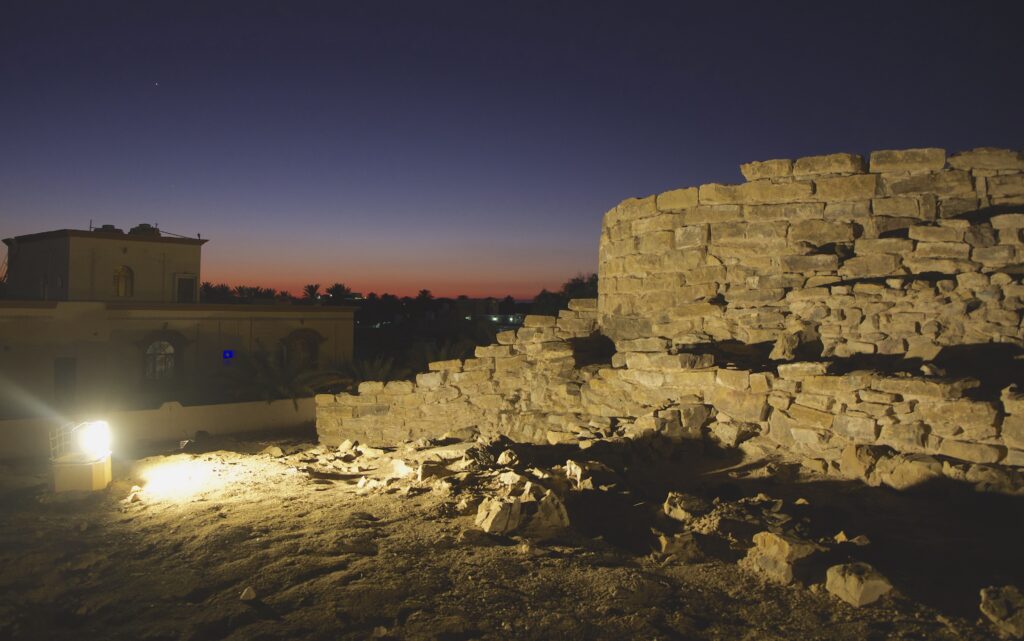Piecing Together the Puzzle of Oman’s Ancient Towers

I snapped the last excavation photo of the season during a warm afternoon in northern Oman. My gaze moved across the desert landscape toward the monumental circular stone structure of Kasr al-Khafaji. Built by ancient Southeastern Arabians more than 4,000 years ago, it stands as one of over 100 known “towers” found throughout present-day Oman and the United Arab Emirates.
Transfixed on Kasr al-Khafaji, I returned to a question that has been with me for years: Why is this here? Even after decades of research and excavation, the purpose and function of the towers remain largely a mystery to archaeologists.
Ancient people in Southeastern Arabia constructed the large towers out of raised mudbrick and/or stone, stacking the blocks circularly in an intricate Tetris-like manner. Despite their remarkable size and history, many languish in the background. They continue to puzzle Omanis, archaeologists, and tourists alike. When people do visit or come across the towers, many have no idea they are looking at structures built thousands of years ago.
But ongoing archaeological work, along with recent government investments in Oman’s heritage tourism industry, is spurring renewed interest in the towers. Slowly, researchers are piecing together clues that shed light on how and why ancient people living within challenging desert environments may have chosen to build these impressive structures.
I currently co-direct the Archaeological Water Histories of Oman (ArWHO) project. We investigate the long-term role of water in ancient Oman and its impact on oasis agriculture, copper metallurgy, stoneware production, and trade. Our research strengthens the link between these elusive remnants of ancient Southeast Arabian society and one of the region’s most important and limited resources: water.
This work offers new information that will help us understand Oman’s past—and its future.
THE TOWERS OF SOUTHEASTERN ARABIA
Earlier this year, I returned to Oman after five years away. I visited my old excavation site, Kasr al-Khafaji, within the UNESCO World Heritage sites of Bat, al-Khutm, and al-Ayn. These received a UNESCO designation because they contain some of the most complete and well-preserved third-millennium B.C. settlements, monuments, and necropolises in Eastern Arabia.
Kasr al-Khafaji and other towers emerged during the Umm an-Nar period (circa 2700–2000 B.C.) of the region’s early Bronze Age (circa 3100–1250 B.C.). This period marks an important time in Southeast Arabia’s ancient history when people began settling in oases and likely embarked on water diversion projects to allow for agriculture. Communities started creating new burial monuments and local craft industries, including ceramics, metals, and stonewares. They also began trading more with distant societies in Mesopotamia and the Indus Valley.
Since archaeological work began in Oman, scholars have proposed various theories about the towers’ purpose and function. Some think they were built as defensive structures, either to keep unwanted others out or to provide refuge for locals fleeing invasion. Others have hypothesized they protected elites living within the vicinity. A couple of researchers proposed these structures were not even towers but ritual platforms that served important religious purposes, especially for funerals. It is likely the structures held multiple purposes, functions, and meanings across millennia.
But what drove their initial construction? Why did ancient people choose to build the towers where they did?
Archaeologist Michael Harrower, the principal investigator for the ArWHO project, and I suspected their locations had something to do with water. Having a consistent water source would have been particularly important for ancient Southeastern Arabians because of the large-scale activities, such as oasis agriculture and mining metals, that communities were engaged in.
WHY WATER?
Arabia’s ancient inhabitants needed to know how to access water in the hot desert landscape of northern Oman. It rains an average of 13 days a year, and people living inland can rely on only a few permanent lakes or rivers as freshwater sources.
Modern-day Omanis get their water for irrigation and daily use in three main ways. Some rely on the oldest water transport method, still in use throughout the country, known in Arabic as afalaj. This method uses gravity to redirect water from distant places into local access areas using human-made tunnels and channels. Others use dedicated wells and electric pumps to access groundwater. In yet other cases, people pay the government to deliver water to their homes via underground pipes or trucks.
In the Umm an-Nar period, however, people obviously did not have motorized pumps or trucked-in water. The afalaj system, while old, only appears in the later Iron Age period about 3,000 years ago. Some of the towers possess what researchers hypothesize could be wells, but not all.
So, we thought about rainfall.
Even if rain was not frequent, harnessing it might have been an important consideration for the tower builders. We set out to test the connection between tower locations and where rainfall might naturally flow on the landscape. Using terrain data, hydrological modeling, and statistical analyses, we found a significant relationship between the towers and areas where rainfall could accumulate.
Interestingly, our results showed that Umm an-Nar people did not always target the places with highest water accumulation, perhaps to avoid flooding. However, they did construct towers near spots where rainfall would accumulate. This suggests Umm an-Nar people were aware of possible places to access surface water and chose to build near such locations.
In other words, while the purpose, function, and meaning of these structures likely changed over time, water seems to have played a foundational role in the towers’ origin stories. These findings showcase the resourcefulness and ingenuity of ancient communities—and might even hold lessons for us today, as communities in Oman and elsewhere continue to deal with water scarcity.
SHIFTING TO TOURISM
As archaeologists inch closer to understanding these enigmatic ancient structures, some readers may be wondering: But why would preserving and understanding the towers matter today to Oman? The answer rests not with water but with another precious natural resource: oil.
Starting in the 1970s, Oman harnessed its oil reserves to propel itself from impoverishment to prosperity. The fossil fuel industry funded roads, health care systems, educational institutions, and more. As the government pushed infrastructure development, officials also led public campaigns encouraging the importance of preserving Omani culture and heritage. When limited oil reserves prompted Oman to explore other economic options, heritage tourism emerged as a promising option.
Read more from the SAPIENS archives: “Fishing in the Shadow of Oil.”
Over the past decades, Omani government officials have devoted more resources to strengthening the connections between archaeology, heritage, and tourism. Unlike oil, which is a limited resource, archaeology combined with heritage tourism can potentially provide ongoing, unlimited economic growth.
Over the years, I heard murmurs of plans to prepare the towers for tourism. On my recent visit, I saw these changes finally taking shape. For one thing, the jurisdictions overseeing archaeological work and tourism in Oman merged to become the Ministry of Heritage and Tourism.
The towers are starting to get more attention too. At the UNESCO World Heritage sites of Bat, al-Khutm, and al-Ayn, many tower sites are now roped off, including my old excavation site, Kasr al-Khafaji. At al-Khutm, the site boasts a carefully constructed fence and impressive lighting that can be seen from the roadside. These changes signal both acknowledgment and preservation of these monumental landmarks on the Omani landscape for years to come.
The mystery surrounding Southeastern Arabia’s towers still endures. But now, each new find is directly intertwined with Oman’s push for heritage tourism. Investing in continued archaeological work is also an investment in Oman’s future.
































